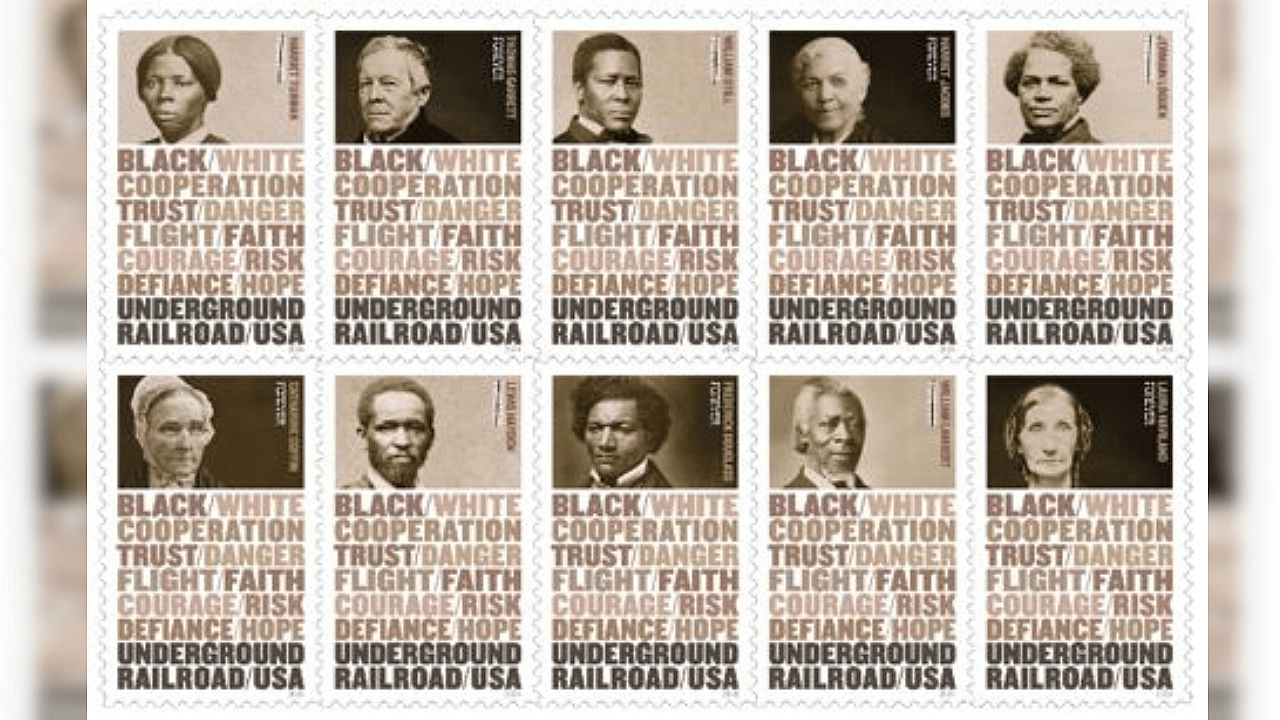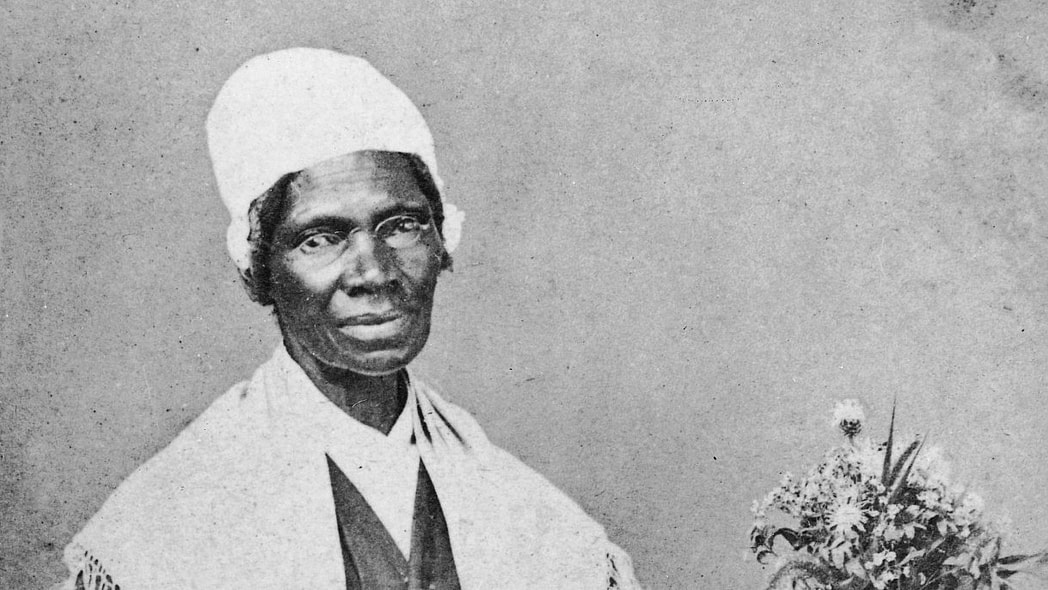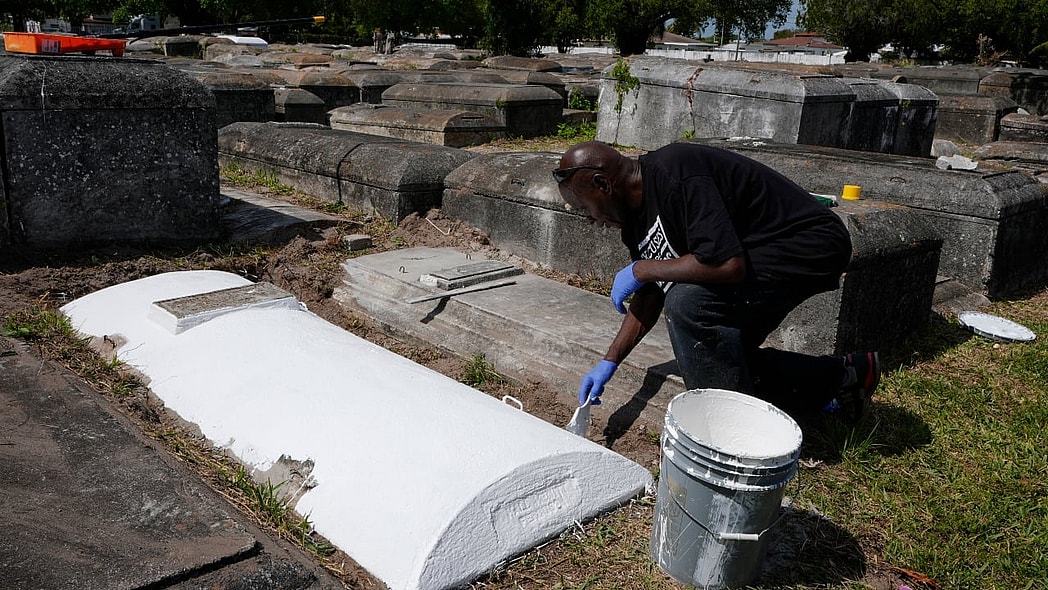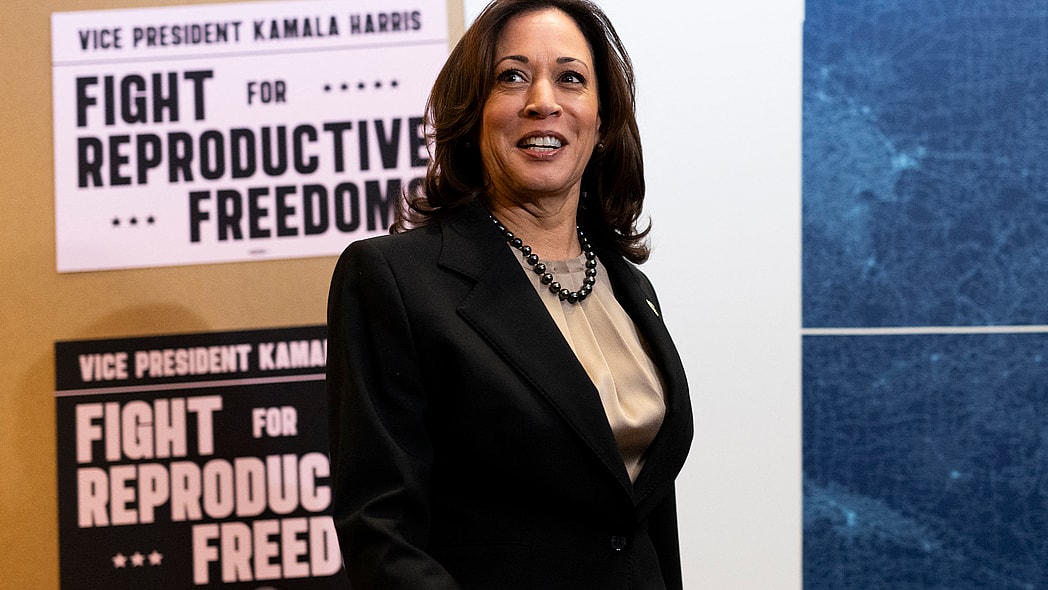The U.S. Postal Service unveiled several stamps honoring the ingenuity, bravery, and resilience of 10 courageous men and women who helped guide enslaved people to freedom via the network of secret routes and safe houses known as the Underground Railroad.
According to a press release, the set of 20 stamps features freedom seekers and those who helped others escape. On the reverse side, a map illustrates the broad paths and an explanation of the Underground Railroad Network to Freedom from the National Park Service.
“For many enslaved African-Americans, the Underground Railroad was their only hope to escape the brutality of slavery,” said USPS Board of Governors member Ronald A. Stroman.

Catherine Coffin
Coffin and her husband, Levi, relocated to Newport, Wayne County — now the municipality of Fountain City, Indiana — in 1826. Their home was near important escape routes connecting multiple cities to freedom in the North and Canada. Historians believe the Coffins helped about 2,000 African-Americans escape slavery via the Underground Railroad over 20 years, providing them with food, clothes, and shelter. She died on May 22, 1881, in Cincinnati, Ohio.
Frederick Douglass
Douglass was enslaved for many years until, on Sept. 3, 1838, he fled under the pretense of being a free Black sailor and headed for New York City. After relocating to New Bedford, Massachusetts, he started attending abolitionist gatherings and soon rose to prominence as one of the most well-known Black men in history, renowned for his speeches opposing slavery and promoting women’s suffrage. He held several political appointments — including U.S. ambassador to Haiti, Recorder of Deeds for the District of Columbia (Thomas), and U.S. Marshal — before dying of a heart attack at age 77.
Thomas Garrett
At the age of 24, Garrett managed to free a kidnapped Black woman headed for slavery in the South. From then on, he became best known for his ceaseless efforts to aid and defend enslaved African-Americans and abolish the practice. Despite threats, assaults, arrests, harassment, and a $10,000 reward for his capture, he helped all freedom seekers, assisting over 2,500 runaways on their way to freedom before dying at 82.
Recommended Stories
Laura Haviland
Haviland spent much of her life advocating for social justice and education, lobbying, leading protests, influencing legislation, or holding public demonstrations against the particular injustices she faced. In 1837, she and her husband established the Raisin Institute, an academy accepting “all of good moral character,” irrespective of race. After her husband’s death, she visited the South often and became more active in the Underground Railroad. She established an orphanage primarily for Black children and organized relief efforts for wounded or imprisoned soldiers during the Civil War as well as for formerly enslaved people, refugees, and those still illegally enslaved.
Lewis Hayden
After escaping slavery in the mid-1840s, Hayden and his family settled in Boston, where he opened a successful clothing store. He took on multiple responsibilities in the local abolitionist movement and was a crucial part of Boston’s Underground Railroad network. As a member of the Boston Vigilance Committee’s executive committee, Hayden reportedly raised funds, donated clothing, boarded freedom seekers, and transported them outside of Boston, which resulted in direct and occasionally dangerous action. Likely one of the first Black state employees, he worked as the Secretary of State’s Messenger, giving him access to numerous prominent state government figures, for 30 years. He died in 1889.
Harriet Jacobs
Jacobs, a freedom seeker, writer, and abolitionist, endured years of physical abuse and sexual harassment at the hands of Dr. James Norcom, the father of a three-year-old girl to whom she and her brother were willed in 1825. In 1835, she ran away and took refuge in her grandmother’s cramped attic, where, according to her biography, “Incidents in the Life of a Slave Girl,” she lived for nearly seven years before making her way north via the Underground Railroad. Ten years later, legally free, she worked as a relief worker committed to helping the recently freed Southerners by the end of the Civil War.
William Lambert
Prior to the Civil War, Lambert was one of the most active African-American men in Detroit having a successful tailoring and dry cleaning business in addition to his public activities. Lambert worked with the Underground Railroad, chaired the Detroit Vigilant Committee, established an African-American secret order, served as a deacon in his church, and advocated for publicly funded education for African-American children. He died in 1890.
A reporter for the Detroit Tribune interviewed Lambert in 1886 regarding his pre-Civil War activities, with the resulting newspaper article serving as a significant source of information regarding antebellum Detroit and African-American activities.
Jermain Loguen
Loguen stole his master’s horse and escaped slavery in 1834. In 1841, now married with children, he and his family relocated to Syracuse, New York, where he worked as a teacher and obtained a preaching license. He was a fervent abolitionist and rose to prominence as one of the nation’s most active Underground Railroad agents. In open letters to the Syracuse press, Loguen disclosed his whereabouts and solicited funds to support others needing help. He reportedly helped over 1,500 freedom seekers.
William Still
Prior to becoming a successful businessman, Still worked as a clerk and janitor for the Pennsylvania Society for the Abolition of Slavery in 1847. Soon after, he started helping runaway enslaved people, providing shelter until they could make it farther north, and keeping careful records of those he assisted. His older brother Peter was one of the fugitives, having been left behind when his mother fled some 40 years before.
Fearing that his documents about helping runaways might be used to prosecute people, Still destroyed many of them before the Civil War. After the war, his children convinced him to write about his efforts and the people he helped. Still’s book, “The Underground Railroad” (1872), is one of the most significant historical documents.
Harriet Tubman
William Still taught Tubman a lot about the Underground Railroad, and in 1850, she returned to Maryland for the family she had been separated from years prior. Between 1850 and 1860, she led roughly 70 people – including her parents, Ben and Rit, to freedom via the Underground Railroad. Many African-Americans — both free and enslaved — dubbed her “Moses” in honor of the biblical figure. “I never ran my train off the track and I never lost a passenger,” Tubman once said while discussing her achievements.
Enslaved people made constant attempts to break free from slavery, starting from the moment it was introduced to the Colonies until 1865 when the ratification of the 13th Amendment led to its abolishment throughout the country. Whether traveling by foot, horseback, carriage, wagon, or boat, the journey to freedom was challenging and extremely risky.
“The Underground Railroad demonstrated the power of collective action and solidarity in achieving social change, even when the odds seemed insurmountable,” Stroman added. “The United States Postal Service is privileged to celebrate the ingenuity and resilience of the enslaved people and those who bravely assisted them in the face of adversity with the dedication of these new stamps.”
Never miss a beat: Get our daily stories straight to your inbox with theGrio’s newsletter.









